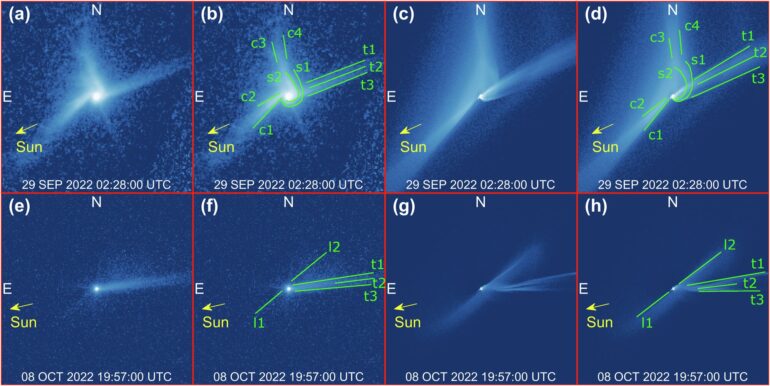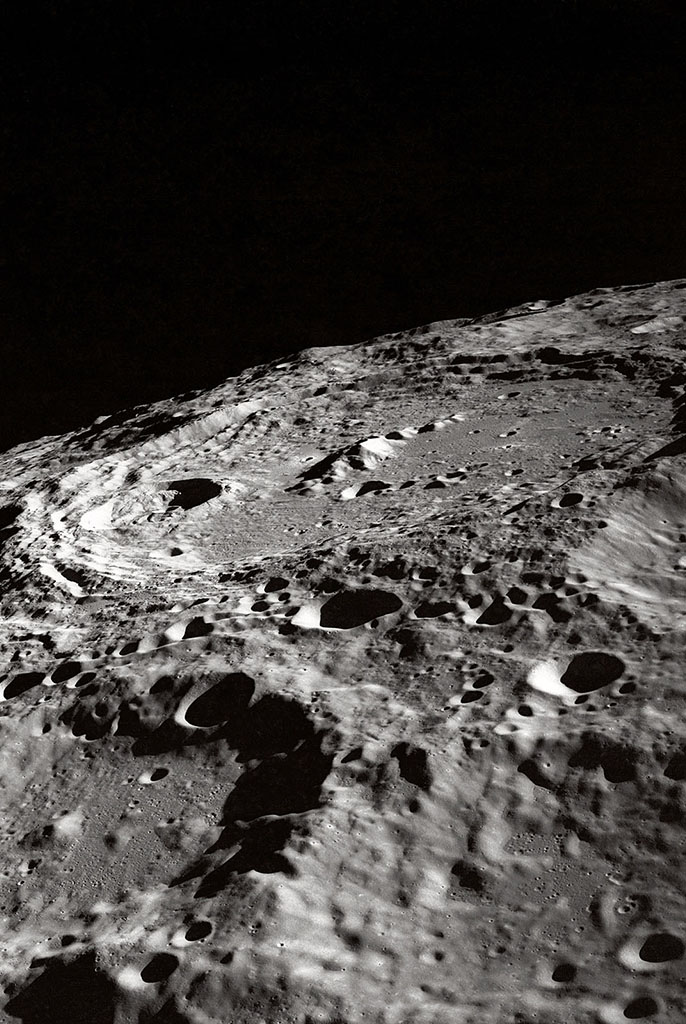How prepared are we to deflect an asteroid heading towards Earth? This question is answered by two studies just published in Nature Communications, the result of a collaboration between Politecnico di Milano, Georgia Institute of Technology and other international institutions. The research analyzes the historical results of NASA’s DART (Double Asteroid Redirection Test) mission, which hit the asteroid Dimorphos on September 26, 2022, marking the first practical demonstration of planetary defense.
The impact, observed through ground and space-based telescopes as Hubble, produced a huge amount of ejecta—fragments ejected from the surface—revealing crucial information to improve the effectiveness of future asteroid deflection missions.
The first study was conducted by a team of researchers from the Department of Aerospace Science and Technology at the Politecnico di Milano, lead by Professor Fabio Ferrari and including Paolo Panicucci and Carmine Giordano, in collaboration with the Georgia Institute of Technology. The second study, coordinated by Professor Masatoshi Hirabayashi of Georgia Tech, included contributions from Ferrari himself.
“We used Hubble Space Telescope’s images and numerical simulations to quantify a viable mechanism of the ejecta evolution and successfully estimated ejected particles’ mass, velocity, and size,” Professor Ferrari explained.
“We also found complex interactions of such particles with the asteroid system and solar radiation pressure, i.e., sunlight pushing ejecta particles. Understanding these processes is crucial to supporting effective design of future actions for planetary defense purposes.”
The asteroid’s shape can make a significant difference in its ejecta trajectory, according to the second study from Georgia Tech. Professor Masatoshi Hirabayashi’s study highlights a surprising finding: it identified the impact scale and the asteroid’s rounded surface lowered the asteroid push by 56% compared to when Dimorphos was tested as an entirely flat wall. Thus, sending a large impactor does not mean a big push.
“If the impact is large, more ejecta fly out of the surface but are more affected by surface tilts. This process makes the ejecta deviate from the ideal direction, reducing the asteroid push,” Professor Hirabayashi explained.
“Sending multiple smaller impactors not only results in a higher asteroid push but also potentially saves operational cost and increases tactical flexibility for deflection.”
Ferrari agrees with this concept, as his study analyzed the evolution of the ejecta, contributing to clarifying their role in asteroid deflection: “Understanding the impact processes and their consequences is crucial to understanding the properties of asteroids, their natural evolution and fate, and ultimately, to design mitigation actions for planetary defense purposes.”
More information:
Fabio Ferrari et al, Morphology of ejecta features from the impact on asteroid Dimorphos, Nature Communications (2025). DOI: 10.1038/s41467-025-56551-0
Masatoshi Hirabayashi et al, Elliptical ejecta of asteroid Dimorphos is due to its surface curvature, Nature Communications (2025). DOI: 10.1038/s41467-025-56010-w
Provided by
Polytechnic University of Milan
Citation:
Asteroid deflection strategies: Researchers unveil new scenarios (2025, February 20)



